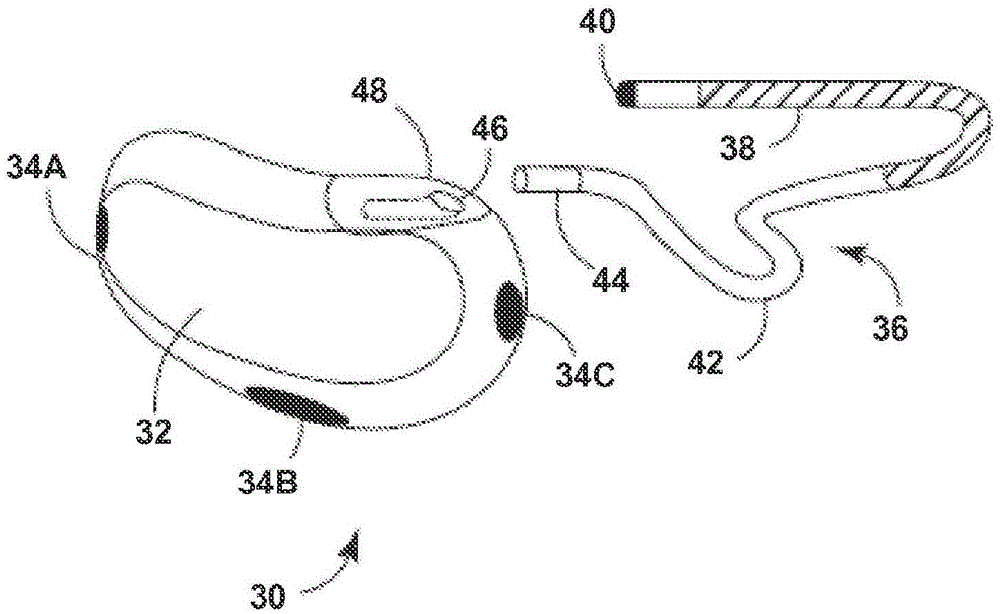Systems and methods for leadless pacing and shock therapy
An electrode, electrical signal technology, applied in the direction of electrotherapy, therapy, cardiac electrodes, etc., can solve the problem that R waves cannot be identified.
- Summary
- Abstract
- Description
- Claims
- Application Information
AI Technical Summary
Problems solved by technology
Method used
Image
Examples
Embodiment Construction
[0030]The present disclosure describes various techniques and systems for monitoring tachyarrhythmias and delivering anti-tachycardia therapy using subcutaneous implantable cardioverter defibrillation (SICD) and leadless pacing devices (LPD). In general, SICDs may be configured to detect tachyarrhythmias and deliver anti-tachyarrhythmic shock therapy from one or more electrodes implanted subcutaneously, such as outside the patient's chest cavity. Thus, the SICD can deliver shocks to the patient without any leads implanted within the patient's blood vessels and / or heart. However, the absence of endocardial or epicardial electrodes can reduce cardiac signal sensitivity and / or make sensing arrhythmias more challenging. For example, muscle movement, respiration, postural changes, and other sources of physiological signals, as well as environmental noise, can affect the ability of a SICD to detect cardiac arrhythmias from sensed electrocardiogram (ECG) signals. In addition, the ab...
PUM
 Login to View More
Login to View More Abstract
Description
Claims
Application Information
 Login to View More
Login to View More - R&D
- Intellectual Property
- Life Sciences
- Materials
- Tech Scout
- Unparalleled Data Quality
- Higher Quality Content
- 60% Fewer Hallucinations
Browse by: Latest US Patents, China's latest patents, Technical Efficacy Thesaurus, Application Domain, Technology Topic, Popular Technical Reports.
© 2025 PatSnap. All rights reserved.Legal|Privacy policy|Modern Slavery Act Transparency Statement|Sitemap|About US| Contact US: help@patsnap.com



